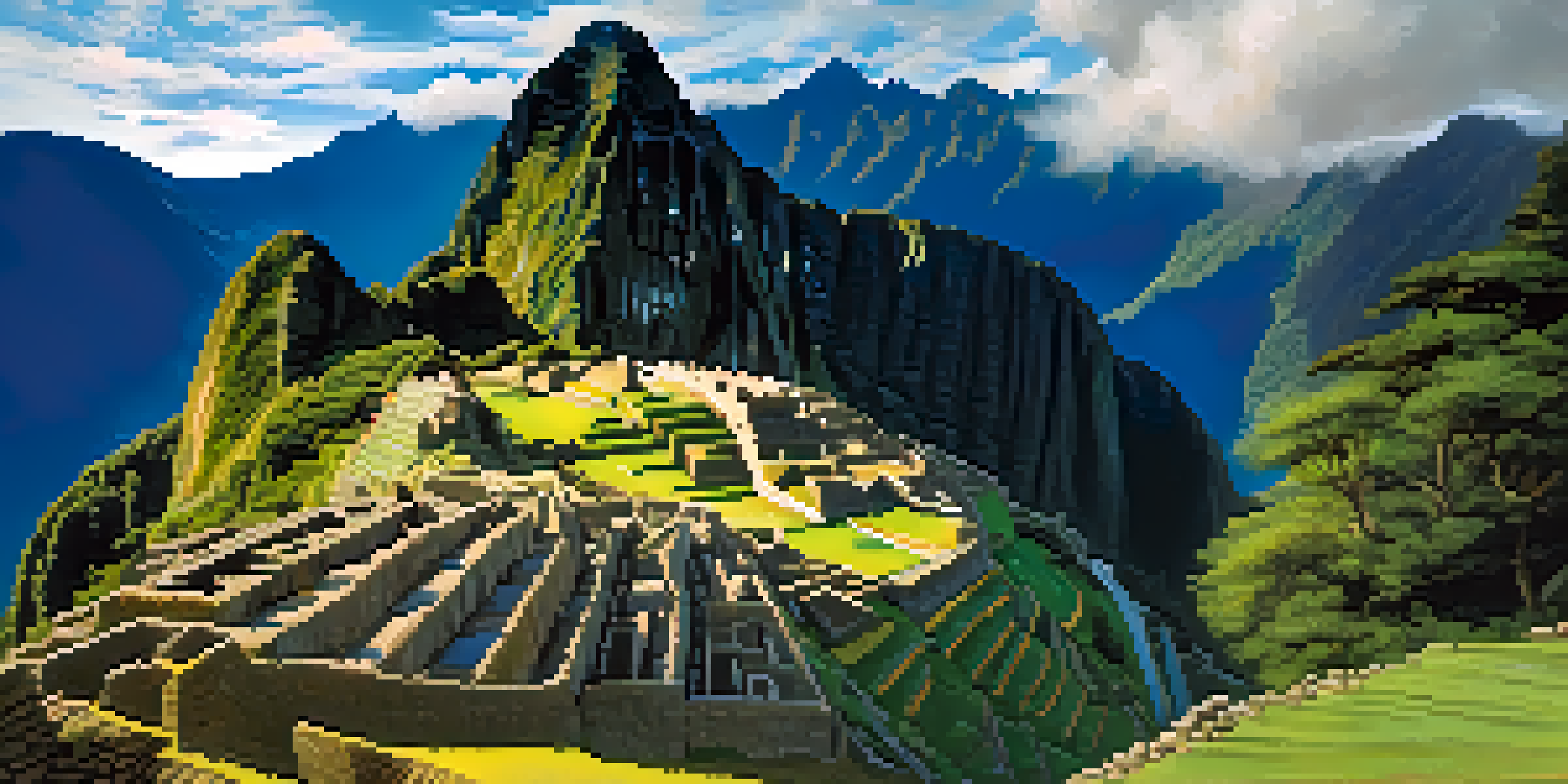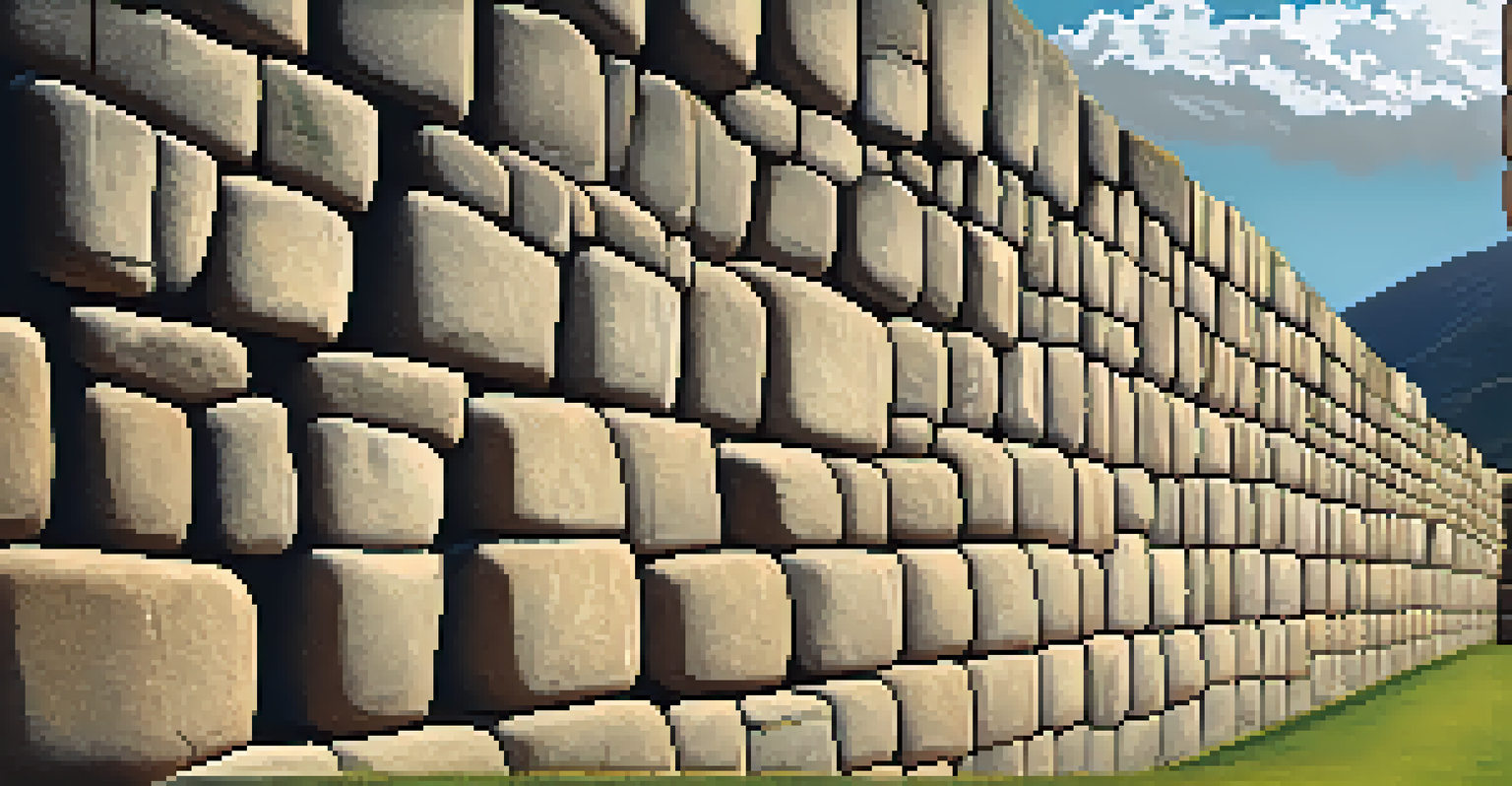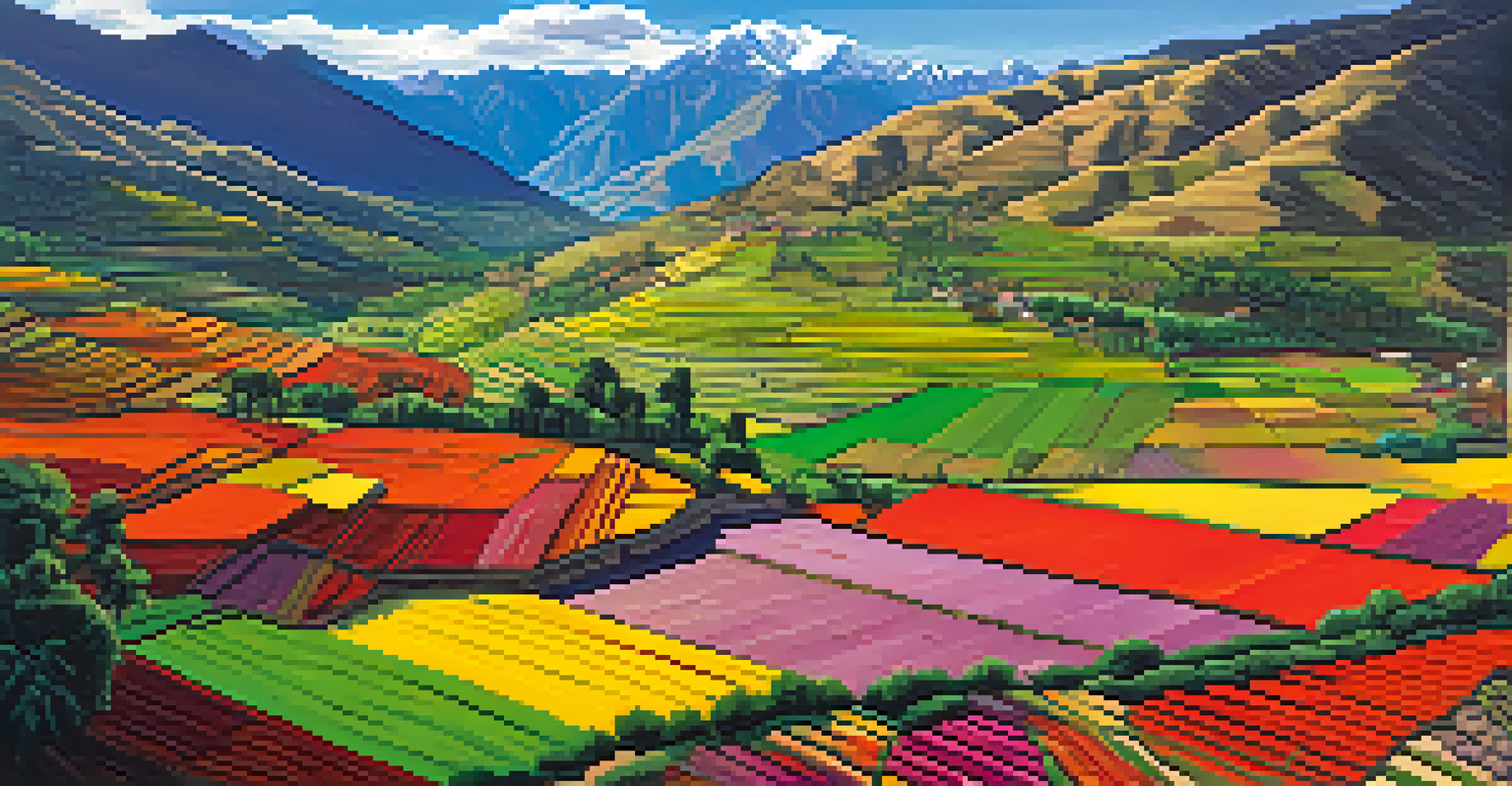Exploring the Architectural Wonders of the Inca Empire

The Inca Empire: A Brief Overview
The Inca Empire, which thrived from the early 15th century until the Spanish conquest in the 16th century, was one of the largest empires in pre-Columbian America. Centered in modern-day Peru, it spanned across several countries, showcasing a diverse landscape that included mountains, deserts, and forests. This vast empire was not only rich in resources but also in culture, with a sophisticated society that valued architecture and engineering.
The Inca built their cities and temples with remarkable precision, often aligning them with celestial events.
At the heart of the Inca civilization was their ability to adapt to their environment, which shaped their architectural practices. They constructed impressive structures that blended seamlessly with the natural landscape, utilizing local materials such as stone and adobe. This harmonious relationship between architecture and nature is a hallmark of Inca design, making their structures not only functional but also aesthetically pleasing.
The Incas built their cities and temples with remarkable precision, often aligning them with celestial events. Their architectural legacy is a testament to their innovative engineering skills, which included advanced techniques such as terracing and irrigation. Through these methods, the Incas were able to cultivate agriculture in challenging terrains, further supporting their large population.
Machu Picchu: The Jewel of the Andes
Machu Picchu is perhaps the most iconic representation of Inca architecture, often referred to as the 'Lost City of the Incas.' Nestled high in the Andes Mountains, this archaeological wonder was built in the 15th century and is renowned for its sophisticated dry-stone construction. The precise fitting of stones without mortar is a testament to the skill of Inca stonemasons, allowing the structures to withstand earthquakes.

The site features a series of agricultural terraces, temples, and residential buildings that showcase the Incas' ability to harmonize with their environment. The terraced fields not only provided food for the inhabitants but also helped manage water runoff, demonstrating their advanced understanding of agriculture and water management. Every corner of Machu Picchu reflects the Incas' deep connection to nature and their architectural ingenuity.
Inca Empire's Architectural Ingenuity
The Incas showcased remarkable engineering skills through their sophisticated architectural practices, blending structures with the natural landscape.
Visitors to Machu Picchu are often struck by the breathtaking views and the sense of history that permeates the site. The layout of the city is believed to have been designed with astronomical alignments in mind, adding a spiritual dimension to its physical beauty. As one wanders through the ruins, it's easy to appreciate why this site is considered one of the New Seven Wonders of the World.
Sacsayhuamán: A Fortress of Stone
Sacsayhuamán, located just outside of Cusco, is an impressive fortress that showcases the architectural prowess of the Incas. Built primarily from massive limestone blocks, some weighing over 100 tons, this site exemplifies their advanced engineering skills. The walls are constructed with a precise interlocking technique, allowing them to withstand the forces of nature, including earthquakes.
The legacy of the Inca Empire serves as a reminder of the importance of respecting and preserving our cultural heritage for future generations.
The layout of Sacsayhuamán is not just functional; it also holds significant cultural and religious importance. The structure is thought to have had a ceremonial purpose, with its zigzag walls symbolizing the teeth of a puma, an important animal in Inca mythology. This connection between architecture and spirituality underscores the Incas' belief in the sacredness of their surroundings.
Visitors can explore the expansive site and take in the panoramic views of Cusco from its elevated position. The combination of strategic fortification and spiritual significance makes Sacsayhuamán a remarkable example of Inca architecture. Its enduring legacy continues to captivate scholars and tourists alike, drawing attention to the sophistication of Inca civilization.
The Sacred Valley: Inca Agricultural Innovations
The Sacred Valley, located between Cusco and Machu Picchu, is a prime example of Inca agricultural ingenuity. The Incas utilized the valley's diverse microclimates to cultivate a variety of crops, including potatoes, maize, and quinoa. Their innovative farming techniques, including terracing and irrigation systems, allowed them to maximize agricultural output, ensuring food security for their growing population.
Terracing, a hallmark of Inca agriculture, involved creating flat areas on steep hillsides to prevent soil erosion and manage water effectively. This method not only enhanced crop production but also transformed the landscape into a patchwork of lush fields. The Incas understood the importance of sustainable farming practices, and their techniques are still studied and applied in modern agriculture.
Machu Picchu: A Historical Wonder
Machu Picchu stands as a testament to Inca innovation, featuring advanced dry-stone construction and a layout aligned with astronomical events.
Visitors to the Sacred Valley can see these ancient agricultural practices in action, with many local farms continuing to utilize traditional methods. The beautiful terraced landscapes, along with the stunning backdrop of the Andes, make the Sacred Valley a must-visit destination. The ongoing connection between the land and its people highlights the enduring legacy of Inca agricultural innovation.
Qorikancha: The Temple of the Sun
Qorikancha, or the Temple of the Sun, was one of the most important religious sites in the Inca Empire. Located in Cusco, this temple was dedicated to Inti, the sun god, and was richly adorned with gold, reflecting the Incas' reverence for the sun. The temple's walls were originally coated in sheets of gold, making it a dazzling sight that symbolized the wealth and power of the Inca civilization.
The architectural design of Qorikancha is notable for its use of ashlar masonry, where stones are cut to fit together tightly without mortar. This construction technique not only provided strength but also allowed the walls to withstand seismic activity, a critical consideration given the region's earthquakes. The temple was a focal point for religious ceremonies and played a significant role in Inca culture.
Today, the ruins of Qorikancha stand as a reminder of the Inca's architectural mastery and spiritual devotion. The site has also been influenced by Spanish colonial architecture, with a church built on top of the temple's foundations. This blend of cultures highlights the complex history of the region and the enduring legacy of the Inca Empire.
Ollantaytambo: A Living Inca Town
Ollantaytambo is a unique example of an Inca town that has remained inhabited since the time of the Incas. This ancient site features well-preserved ruins, including impressive agricultural terraces and a large ceremonial center. The town's layout follows the original Inca design, with narrow cobblestone streets that evoke a sense of stepping back in time.
The most striking feature of Ollantaytambo is its massive stone temple complex, which was likely used for religious ceremonies and as a fortress. The temple showcases the Inca's remarkable stone-cutting techniques, with perfectly shaped blocks that fit together seamlessly. The strategic placement of the site on a hillside also offered a defensive advantage against potential invaders.
Sustainable Inca Agricultural Practices
The Incas utilized innovative terracing and irrigation techniques in the Sacred Valley, enhancing agricultural output and showcasing their environmental adaptability.
Visitors to Ollantaytambo can experience the vibrant culture of the town, where local traditions and Inca heritage are preserved. The site serves as a gateway to the Sacred Valley, making it a popular stop for travelers exploring the region. The combination of historical significance and modern-day life creates a captivating atmosphere that celebrates the enduring spirit of the Inca Empire.
The Legacy of Inca Architecture Today
The architectural wonders of the Inca Empire continue to inspire awe and admiration around the world. Their innovative techniques and harmonious relationship with nature serve as lessons for modern architects and engineers. As we face challenges such as climate change and urbanization, the Inca's sustainable practices offer valuable insights into creating resilient and eco-friendly structures.
Today, many of the Inca sites are recognized as UNESCO World Heritage Sites, attracting millions of visitors each year. These historical treasures not only highlight the ingenuity of the Inca civilization but also contribute to the local economy through tourism. The preservation of these sites is vital in maintaining the cultural heritage and identity of the Andean people.

As we explore these architectural marvels, we gain a deeper understanding of the Inca Empire’s complexities and achievements. Their legacy serves as a reminder of the importance of respecting and preserving our cultural heritage for future generations. The story of the Incas and their architecture remains a powerful testament to human creativity and resilience.